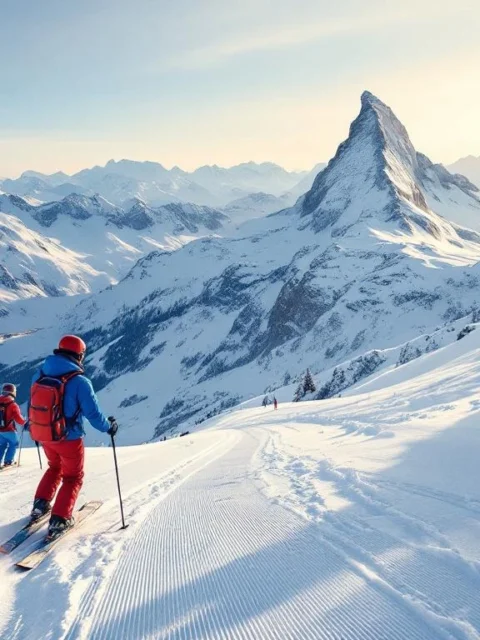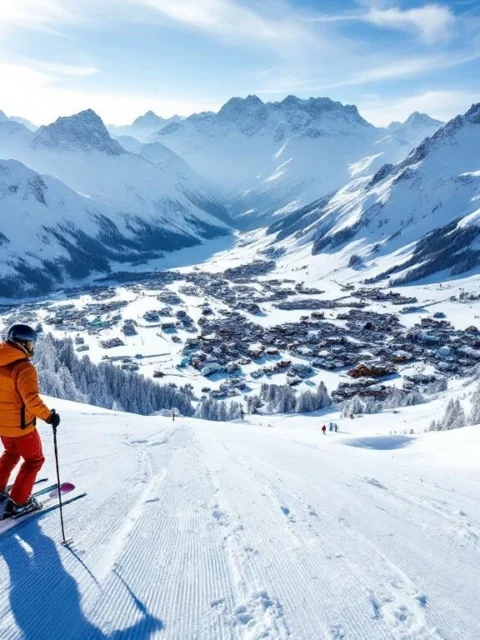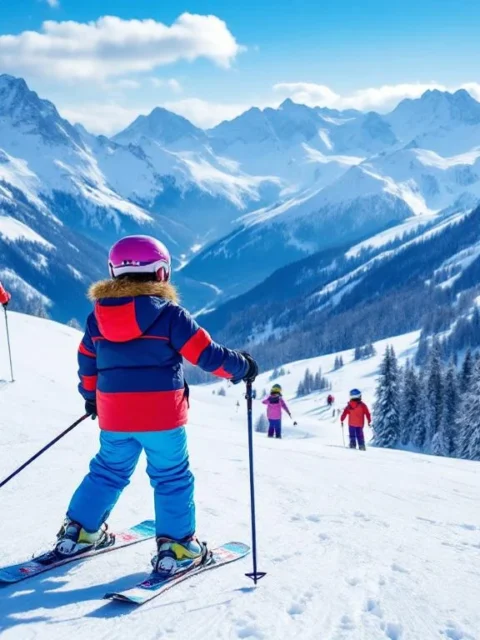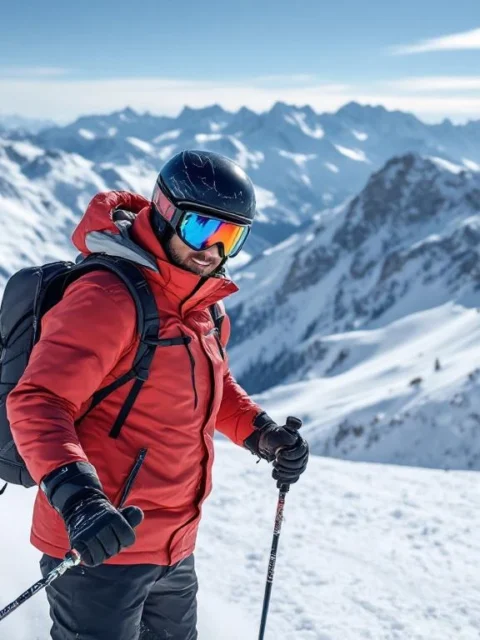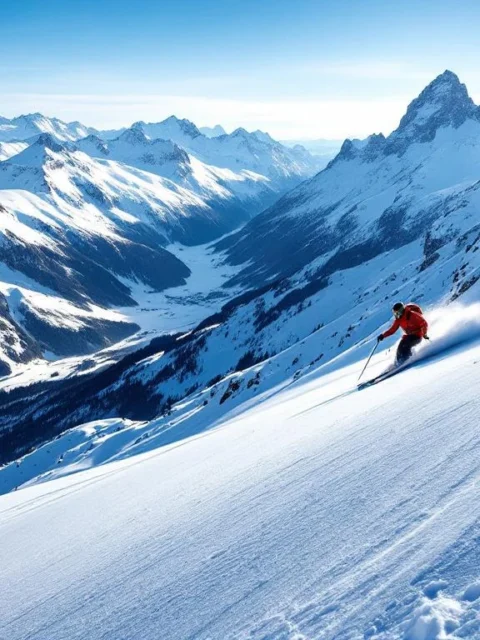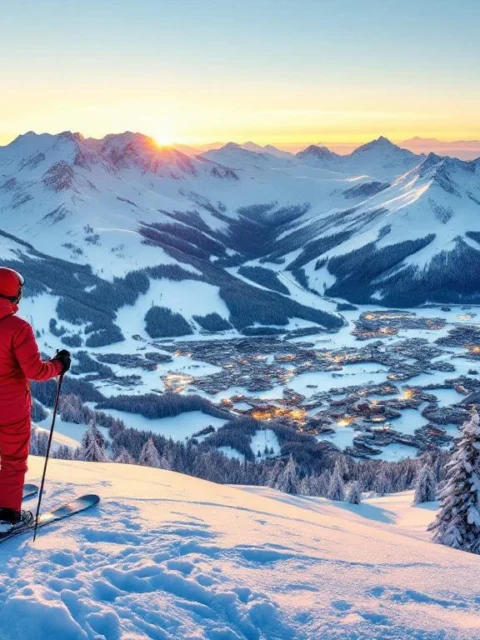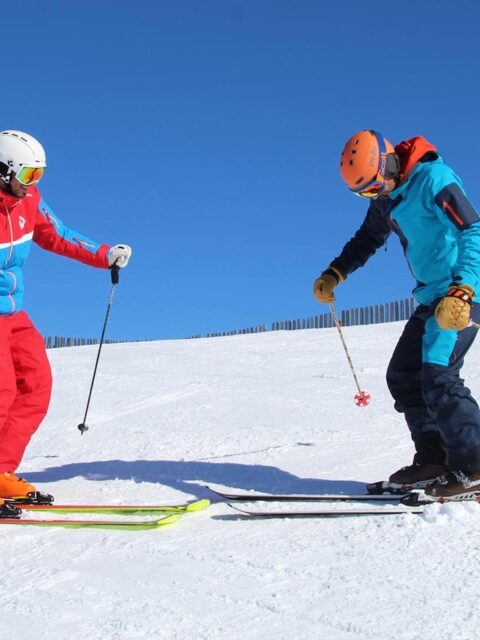Can everyone learn to ski?
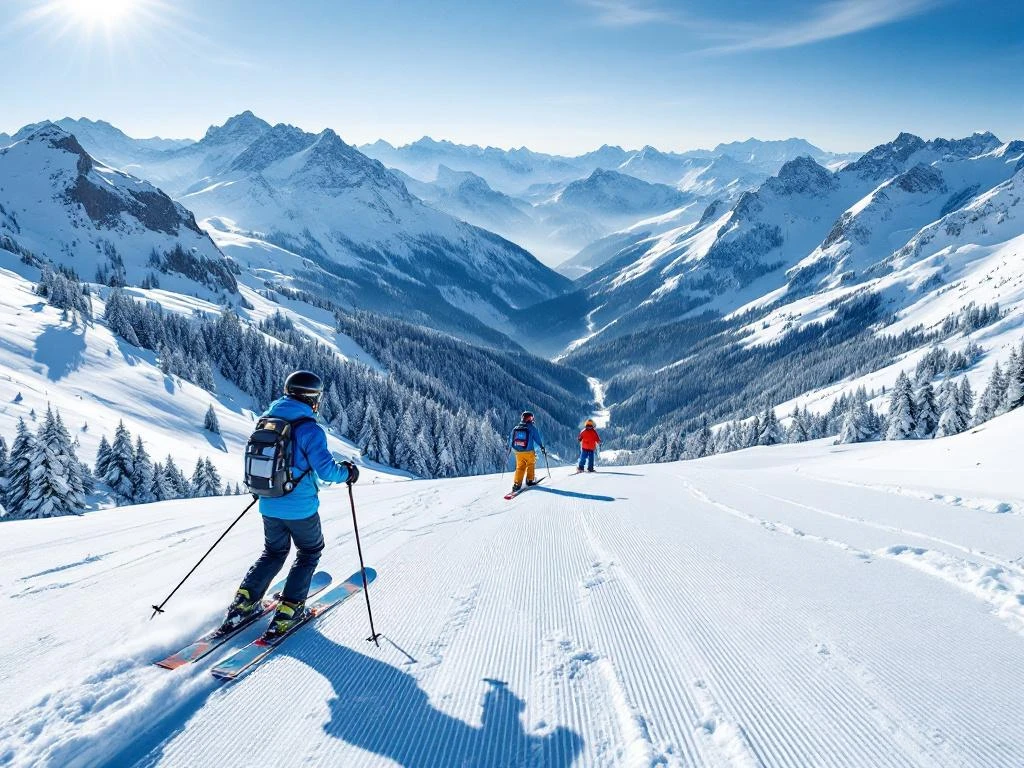
Yes, virtually everyone can learn to ski! Whether you’re 4 or 84 years old, with a good instructor and the right attitude, almost anyone can master the basic skills of skiing. Of course, your physical condition plays a role, but there are adapted techniques for different needs. The learning curve varies per person – some people glide independently down beginner slopes after just one day, while others need more time to feel comfortable on skis.
Can Everyone Learn to Ski, Regardless of Age?
Age is certainly not a barrier to learning skiing. Children from about 3-4 years old can already playfully get acquainted with snow, while there is no upper age limit for those who want to start later in life. We simply adapt the teaching method and pace based on age and physical abilities.
Young children often learn surprisingly quickly because they have a lower center of gravity and experience less fear. They pick up basic techniques through play. For little ones, the most important thing is having fun in the snow – the technique follows naturally. Specific children’s ski schools make the learning process extra fun with games and adapted exercises.
Adults have different advantages: they understand instructions better and can work more consciously on their technique. As an adult who stands on skis for the first time, you might need a bit more patience. Our bodies are less flexible than children’s, and we are more aware of risks. But with the right guidance and a positive attitude, you can successfully learn to ski at any age.
Seniors can also learn to ski excellently, though it’s wise to consider joints and stamina. Many ski schools offer specially adapted lessons for older people, with the focus on enjoyment, safety, and technique rather than speed or challenge. The controlled movements and steady pace of good skiing can actually be very pleasant for the older body.
Which Physical Limitations Can Affect Learning to Ski?
Physical limitations need not be an insurmountable obstacle to learning skiing. The sport is more accessible than ever today, with adapted equipment and specialized instructors who can help almost anyone enjoy the snow. However, certain physical factors do influence how best to learn.
An average fitness level is sufficient to start skiing, although you’ll notice that you can be quite tired after a day on the slopes. Skiing uses muscle groups that we rarely engage in daily life. Especially your leg muscles, core, and balance get a thorough workout. Better fitness does make the learning process more comfortable and prevents fatigue that can lead to falls.
Weight issues are no reason not to learn skiing. However, extra weight can mean more pressure on knees and joints, so you might need shorter sessions with adequate rest breaks. An instructor can help you with techniques that minimize strain.
For people with specific physical challenges, there are adapted skiing methods. Sit-skiing for people with limited mobility in their legs, skiing with prosthetics, or adapted techniques for the visually impaired – nowadays there are possibilities for almost everyone. More and more ski areas and ski schools specialize in adaptive skiing and have the necessary equipment and expertise.
Even with joint problems such as arthritis, you can learn to ski, although it’s important to discuss this with your instructor beforehand. They can adapt exercises and techniques to minimize strain and provide you with a safe, enjoyable experience on the slopes.
How Long Does It Take to Learn Basic Skills?
Most beginners can master the basic skills within 3 to 5 days of skiing. By this, we mean that you can safely descend on simple blue slopes, make turns, and control your speed. Of course, this pace varies greatly per person, depending on physical aptitude, fear, and learning style.
After just one day of ski lessons, most beginners already make significant progress. You typically learn how to stop (the pizza or snowplow turn), how to fall safely, and how to use the ski lift. By the end of the first day, many beginners can already independently descend from a very simple slope.
After about three days, the real fun begins. Most people feel more comfortable on skis by then and start making the transition from the snowplow turn (pizza) to parallel turns. This is when skiing becomes really enjoyable and you can appreciate more of the mountain landscape without constantly focusing on technique.
Factors that can accelerate the learning process include:
- Good physical condition, especially strong leg muscles
- Experience with other balance-related sports such as skateboarding or surfing
- A positive attitude and willingness to fall
- Private lessons instead of group lessons
- Practicing between lessons
Elements that can slow down learning are mainly fear and tension. When you’re tense, your body stiffens and it becomes much harder to make the fluid movements needed for good skiing. A patient instructor can help you overcome this fear by maintaining the right pace for your learning process. Learn more here about suitable ski instructors who can support your learning process.
Where Should You Start as a New Skier?
As a beginning skier, you have several options to master the sport. The ideal starting place depends on where you live, your budget, and how much time you want to invest before hitting a real ski slope.
Indoor ski slopes in the Netherlands are an excellent option for those who want to start close to home. The advantages are that you can practice year-round, the environment is less intimidating than a real mountain, and you can usually find affordable lessons. The slopes are relatively short but perfect for learning basic skills. You get used to the feeling of gliding, learn to brake, and make your first turns. Additionally, you can get accustomed to ski equipment without immediately booking a complete winter sports holiday.
For your first real experience in the snow, ski areas with good beginner areas are ideal. Look for resorts known for their:
- Wide, quiet practice slopes with little steepness
- Good infrastructure such as magic carpets or gentle tow lifts
- Reputable ski schools with Dutch-speaking instructors
- Separate zones for beginners, away from busy main slopes
The choice between private lessons and group lessons is also important for beginners. Group lessons are more affordable and offer a social experience where you learn and laugh together with others. However, the pace is set at the group’s average, which can sometimes be too fast or too slow.
Private lessons are more expensive but offer personalized attention that can accelerate your progress. Your instructor adapts completely to your pace and learning style, and can make immediate adjustments where necessary. For people with specific needs or those who want to make rapid progress, private lessons are often worth the investment.
It also helps to plan your first ski experience outside the busy school holidays. With fewer people on the slopes, you’ll have more space to practice and will feel less rushed by more experienced skiers zooming past you.
Conclusion: Skiing is Accessible to Everyone
So we can answer the question “can everyone learn to ski?” with a resounding “yes!” With the right guidance, a positive attitude, and realistic expectations, almost anyone can learn the sport and enjoy it. Whether you’re young or old, super fit or less in shape, there’s a way to make skiing accessible to you.
The most important thing is to respect your own pace and seek the right support. A qualified ski instructor makes a world of difference in your learning experience. At Ski-Pro, we understand that everyone learns differently and we have a passion for helping people discover the magic of skiing. We connect you with the best ski schools and instructors that match your specific needs and goals.
Remember that even the most experienced skiers once started as uncertain beginners. Every expert on the black slope once stood wobbling on the practice hill. With some perseverance, you too will soon be descending the mountain with a smile and become part of the worldwide community of winter sports enthusiasts!
Frequently Asked Questions
What should I do if I experience fear of heights while skiing?
Fear of heights is a normal reaction for many beginning skiers. Start on low, wide slopes where you feel safe and avoid lifts that go high until you have more confidence. Communicate your fear to your ski instructor, who can offer special techniques to help you focus on your movements instead of the height. Breathing exercises can also help you stay calm. Remember that many skiers with fear of heights eventually become comfortable on the slopes through gradual exposure.
How do I prepare my body for a ski vacation to prevent injuries?
Start targeted training at least 6-8 weeks before your ski vacation. Focus on leg muscles (squats, lunges), core exercises for stability, and cardio for endurance. Balance exercises such as standing on one leg while brushing your teeth are simple but effective. Don't forget to improve your flexibility with regular stretching sessions. During the vacation itself, it's important to warm up properly each day, take sufficient breaks, and stop before you become overtired, as most injuries happen when you're tired.
What ski equipment is really necessary for beginners and what should I rent rather than buy?
As a beginner, it's best to rent skis, ski boots, and poles at the ski resort until you're sure you'll pursue the sport more often. The advantages of renting are professional advice, no transportation problems, and the ability to try different models. What you should purchase yourself are good thermal underwear, water-repellent ski pants and jacket, gloves, a helmet (increasingly mandatory), and good ski goggles. Invest especially in comfortable, technical socks - these make a big difference in comfort and are relatively inexpensive.
How do I deal with fear and frustration during the learning process?
Fear and frustration are normal parts of learning to ski. Set realistic goals for yourself and celebrate small victories. Take a step back to an easier slope if necessary when you feel overwhelmed. Talk openly with your instructor about your fears so they can adapt their approach. Pair-skiing (where you descend together with a more experienced skier) can provide extra confidence. Remember that even experienced skiers regularly fall - it's part of the learning process. Focus on fun and progress at your own pace, not on what others around you can do.
Can I learn to ski if I don't have good balance?
Absolutely! Balance is a skill you can develop, not an innate talent. A good ski instructor will offer specific exercises to gradually improve your balance. Consider starting with shorter skis, which are easier to maneuver. Some people benefit from using just one ski pole at first or from specific balance devices used in modern ski schools. By practicing regularly, even with simple exercises like standing on one leg in daily life, you'll significantly improve your balance and therefore your skiing skills.
What are the most common mistakes beginning skiers make?
The most common mistakes are: leaning too far backward (instead, stay slightly forward), wanting to go too fast (control is more important than speed), distributing weight incorrectly (pressure should be on the outside ski in the turn), looking at your feet instead of ahead, and being too tense (relaxed muscles respond better). Additionally, beginners often underestimate how tiring skiing is, planning days that are too long without sufficient rest. Also, don't be tempted by friends to move too quickly to slopes that are too difficult - follow your own pace and first develop a solid technical foundation.
How can I continue to improve after my first ski lessons?
After your first lessons, consistency is the key to improvement. Try to ski regularly, ideally several days in a row. Consider taking a refresher course occasionally, even if you've already mastered the basics - a professional can correct bad habits before they become ingrained. Video analysis can be tremendously helpful; many ski schools offer this or ask a friend to film you. Skiing with people who are slightly better than you challenges you to grow. Finally, there are excellent online tutorials that you can watch in preparation for your next ski slope visit.


